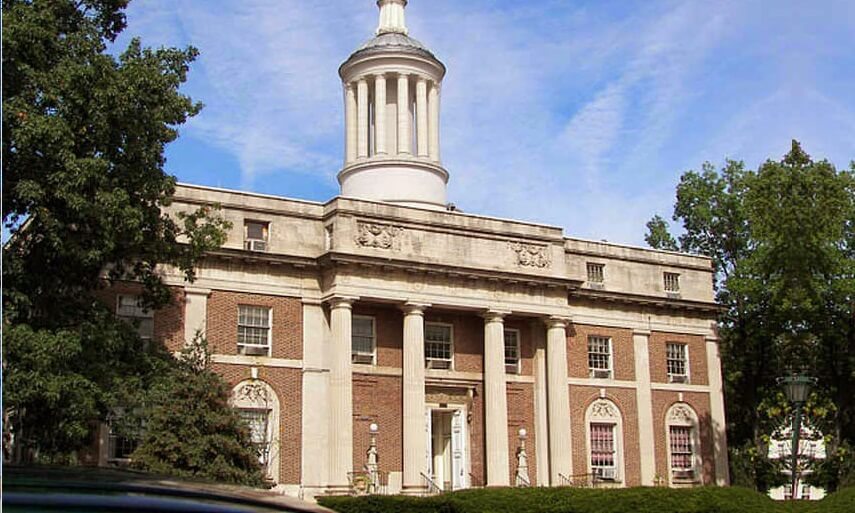Plainfield NJ Sick Leave Law Fails to Provide Clarifications for Business Owners

Plainfield follows the sweeping tide of Sick Leave Laws across New Jersey
On March 14, 2016, Plainfield became the 12th city in New Jersey to pass a paid sick leave ordinance.
Unfortunately, the city didn’t follow the lead of New Brunswick, whose ordinance provides greater clarification and compliance requirements.
Instead, Plainfield copied the ordinances passed by earlier cities, which leaves many gaping holes and unanswered questions for business owners. The other cities with paid sick leave ordinances include East Orange, Newark, Jersey City, Montclair, Passaic, Paterson, Irvington, Trenton, Bloomfield, and Elizabeth.
The Ordinance is officially called “An Ordinance Amending Chapter 8, “Health”, of the Municipal Code of the City of Plainfield, and Creating Article 5, Entitled “Sick Leave for Private Employees”, to Promote the Overall Health and Safety of the Residents and Workers of Plainfield by Reducing the Spread of Communicable Disease and Contagion By Requiring a Policy of Paid Sick Leave for Workers In Plainfield.”
It is also commonly called the City of Plainfield Paid Sick Leave Law.
The purpose of this article is to provide business owners an overview of the Sick Leave Ordinance and how to best be compliant with the new law.
Overview of Paid Sick Leave
Employees of private employers are now able to earn paid sick leave hours. Employees can earn between 24 and 40 hours of paid sick leave each year.
Employees earn sick leave at the rate of 1 hour for every 30 hours worked. The maximum number of sick leave hours available depends on the employee’s occupation and the size of their employer.
It’s important to note that the ordinance states that all employees who work in the city for 80 hours a year or more are covered, but it fails to address occasional-basis employees.
Occasional-basis employees are employees whose private employers reside outside the city, but the employee works occasionally within City limits. These external businesses may be required to provide paid sick leave for employees who work inside the city for 80 hours a year or more.
Accrual of Safe and Sick Time
Large businesses, who have more than 9 employees, are required to provide up to 40 hours of paid sick leave in a year.
Small employers with 9 or less employees are required to provide up to 24 hours of paid sick leave.
The only exception for small employers is for employees who are child-care, home health care, or food service employees. For these employees, sick leave can accrue up to 40 hours a year.
| Employer Size | Maximum hour of sick leave available each year | Amount of sick leave available to be rolled over |
| 10+ employees | 40 hours of paid sick leave a year | 40 hours of paid leave a year |
| <10 employees | 40 hours of paid sick leave a year | 24 hours of paid leave a year |
| *Industry exception, regardless of business size | Any Child-care, home health care, or food service worker can earn 1 hour for every 30 hours worked up to 40 hours a year. | Any Child-care, home health care, or food service worker can earn 1 hour for every 30 hours worked up to 40 hours a year. |
Calculating the Business Employee Size
All employees count toward the employer size including full, part time and temporary employees. When the number of employees fluctuate and to calculate business size, business can calculate the average number of employees employed during the previous year.
Unfortunately Plainfield didn’t borrow any of the New Brunswick provisions and define Full Time Equivalent (FTE).
Instead, the ordinance counts all employees as equal when determining the size of the business. Full time, Part time, and temporary employees are equally weighted. Businesses should average the number of employees on payroll for the year.
This means that all employees count equally as an employee count. There is no distinction between full time and part time employees. In other words, 11 employees who work 15 hours a week each would be counted as 11 employees and be eligible for paid sick leave, despite the fact that they would be equivalent to between 4 and 5 full-time employees.
Paid Sick Leave Accrual
Plainfield does allow some business discretion in determining what 12 month period companies use for the benefit year. It can be any consecutive 12 months that the business defines. Managers should inform employees if the accrual year is different than the standard calendar year of January through December.
Exempt employees, those who are exempt from overtime according to the definitions of the Fair Labor Standards Act, are assumed to work a 40 hour week.
Unless an exempt employee regularly works less hours, they will accrue sick leave based on the 40 hour week. If an exempt employee’s regularly works less than 40 hours a week, in which case that employee will accrue sick leave on their normally worked hours.
Employees can roll up to 40 hours of accrued sick leave to the following year. However, even if 40 hours are rolled over, the employee is still limited to using more than 40 hours of sick leave each year. The ability to roll sick leave provides a way for sick leave to be taken at the beginning of the year before more time has accrued. Companies can also choose to avoid rolling sick leave if they payout unused, accrued sick leave at the end of the year.
This is identical to the previous sick leave laws passed in New Jersey.
Covered Employees under the Paid Sick Leave Ordinance
Plainfield’s Paid Sick Leave Ordinance covers all employees who works inside city limits for at least 80 hours a year. This could mean that companies who operate outside the city, state and even the USA are liable under the new ordinance.
It is vital that employers who have employees who operate on an occasional-basis in the township maintain accurate records of time spent inside the city. All privately employed employees are covered. This includes temporary and seasonal employees, as well as full time and part time employees.
Exceptions to Earned Sick & Safe Time
Plainfield’s Paid Sick Leave Law excludes the city of Plainfield from the sick leave requirements. Additionally, all government employees, including Federal, State and Local governments. Plus, education employees are exempt and are defined as an employee of any school district or the board of education.
Lastly, union construction workers are exempt from the requirements of the law provided there is a collective bargaining agreement and the worker has graduated from or is participating in a registered apprenticeship program.
Allowable Uses for Earned Sick and Safe Time Leave
Plainfield allows for the same uses of sick leave that many of the other cities in New Jersey allow for sick leave usage.
Unfortunately, Plainfield did not include a provision for safe time to protect victims of domestic violence, sexual assault, or stalking like New Brunswick did. Sadly, the Plainfield ordinance used 2 pages of its ordinance to outline the need for public safety and the reasons to enact sick leave, but failed to mention any concern for the safety of violence victims.
All of the Plainfield allowable reasons for sick leave are also covered under New Brunswick. This makes it easier for businesses to comply with the Plainfield ordinance and other ordinances in New Jersey.
Employees can take time off for themselves for any of the reasons, or can take time off to assist a family member with any of the allowable reasons for sick leave.
These reasons include care, diagnosis, treatment, and preventative care for any mental or physical illness, health condition, or injury. In addition, if the employee’s place of business is closed due by order of a public health official due to a public health emergency, sick leave can be used.
If a child’s or family member’s school or place of care is closed by a public health official, then the employee can also take sick leave. In the event that a public health employee determines that the presence of the employee, child, or family member would jeopardize the health of others because of exposure to a communicable disease, then the employee can take time off to care for them. This is applicable, even if the family member or employee has not actually contracted the disease.
- Mental or physical illness: to care for, diagnos, obtain treatment, or preventative care.
- If the business, place of care, or school has been closed due to a public health emergency
- If the employee or family member has had exposure to a communicable disease, even if the employee or family member hasn’t contracted the disease.
Family Member Definitions
Plainfield recognizes parent, child, partner, grandparent, grandchild, or sibling relationships.
Specifically, parent and child relationships include biological, foster, adopted, stepchildren, legal wards. It also includes children, parents, legal wards or guardians of domestic partners or spouses. Lastly parents in loco parentis relationships to the employee or the domestic partner are included, as are children that the employee stand in loco relationship for.
Spouses, domestic partners and legal civil unions are all considered a recognized partnership.
Grandparents, including a spouse, domestic partner or civil union partner of a grandparent are acceptable relationships.
Grandchildren and siblings are recognized, but no further definitions are included around other types of siblings.
- Child: biological, adopted, step, foster, child of a domestic partner or civil union
- Parent: biological, adopted, step, foster, parent or foster parent of a domestic partner or civil union and parent in law.
- Spouse: domestic partner or civil union partner
- Grandparents: including spouses and partners of grandparents.
- Grandchildren
- Siblings
Sick Leave Bank and Minimum Usage
Employees are eligible to start using sick leave 90 calendar days after commencing work. Earned sick leave starts accruing on the first date of employment.
Sick leave can be taken in hourly increments or in the smallest time increment that other absences are accounted for on the payroll system.
Employees who leave an employer and who have accrued, but unused sick leave don’t get sick leave paid out at the termination of employment.
However, if the employee reinstates employment with that employer within a 6 month period, then the previously accrued sick leave must be reinstated with the employee. Plus, the employee doesn’t have to wait through the 90 day probationary period again. They are immediately eligible to start using the reinstated sick leave hours.
Employers are allowed to lend sick leave hours to employees before accrual of hours and are under no liability for choosing to do so. Employers who deny a request to loan sick leave are also under no liability. Sick leave hours transfer to a new owner or successor employer. Accrued hours also transfer with employees who transfer within the same company.
Coordinating with Existing Time Off Policies
Employers who have existing paid time off policies that meet or exceed Plainfield’s Paid Sick Leave ordinance don’t have to provide additional sick leave time. The existing policies must allow for sick leave to be used for all the reasons allowed in the law at for at least 40 hours of sick leave to be accrued at the same rate that the ordinance provides.
HR managers and Payroll Professionals with existing leave policies should examine their guidelines to make sure that all allowable reasons for leave in the sick leave law are also allowed in the company’s policy. Employers should also make sure that their policies include the notification required by law.
Reasonable Documentation and Notification of Sick Leave Usage
Employees are required to notify employers as soon as possible for sick leave usage. Employers can require up to 7 days of notice for sick leave usage, except in an emergency. In an emergency, employees should notify employers as soon as possible.
After an employee has used 3 or more consecutive days of sick leave, then the manager can require documentation by a health care provider that sick leave was necessary. The statement cannot disclose the nature of the sick leave. Employers can also require employees to confirm in writing that sick leave was used for allowable reasons.
Anti Retaliation
Employers are prohibited from any type of retaliation under the Paid Sick Leave Law. That includes any type of discipline, threat, discharge, suspension, demotion, reduction of hours, or any adverse action. Employees can exercise their rights of paid sick leave and cannot be prohibited from attempting to exercise their rights.
They can file complaints, work with the Agency in investigations, participate in any judicial action relating to the act and inform others of their rights under the act.
Notification and Records
Employers must provide a notification of employees rights under the sick leave law when new employees are hired. Additionally employers must post notification in a conspicuous place where the employee’s work. The notices and posters must be in English and any other first languages spoken by more 10% or more of the employees.
The notice has to include the right to sick leave, accrual rate, amount of sick time available for accrual, and the terms of its use. Additionally notification must include the rights of the employee against retaliation and the right to file a complaint.
Fines and Remedies provided by the Sick and Safe Time Ordinance
Businesses can be fined up to $2,000 per violation. Each day is considered a separate violation. This is a costly compliance issue for companies. It is more vital than ever that businesses have a means of staying compliant with sick leave laws.
Time and Attendance and Record Retention
Like many other New Jersey Cities, Plainfield also assumes employer guilt if adequate records are not maintained to prove the employer complied with sick leave requirements.
Sadly, unlike New Brunswick, Plainfield failed to provide clear and adequate requirements concerning those records. There is no specific retention period listed in the ordinance, nor specific details about the nature of the records to be kept.
This makes it crucial for business owners and managers to maintain consistent and detailed records. Manual timekeeping is more easily altered and lost than automated time and attendance records, including employee information, hours worked, sick leave accrual and usage. Businesses should also have written documentation of sick leave requests as well as a written employee handbook.
Businesses should consider maintaining records that include employee time period worked, weekly hours worked, sick leave requests, paid sick leave hours and amount paid for sick leave. Sick leave rolled over should be also be included in the records. . Additionally, employers should consider maintaining these records a minimum of 3 to 5 years as this is the typical timeline required by other, clearer, sick leave laws across the country.
Let SwipeClock Help
Businesses who have employees in more than just Jersey City may have to comply with multiple conflicting City ordinances defining Sick leave accrual and usage laws. Additionally, these businesses have to also comply with Federal Overtime Laws, the Family Leave Medical Act and any other national or local laws that are enacted.
SwipeClock provides a comprehensive array of workforce management and time tracking tools that can help businesses to more easily stay in compliance with local and national laws. Records are effortlessly kept for years and accrual is automatically tracked and reported to employees according to the state and city laws. Additionally, with geo-timekeeping clocks, businesses can effortlessly track time worked in specific cities to ensure compliance.
Resources
Plainfield Sick Leave resource page
Written by Annemaria Duran Last updated on March 13, 2017
Simplify HR management today.
Simplify HR management today.
Your Guide to GPS Time Tracking (Geofencing)
Updated March 19, 2024 When your business has employees working remotely or at various job sites, time tracking can become a challenge, particularly if the company relies on physical clocks for punching in and out. But offering a mobile app or web-based tracking solution can cause some concerns. You might wonder whether employees are clocking…
Read MoreThe Employer’s Guide to Federal & State Meal/Rest Break Laws [See all 50 State Laws Here]
Updated January 23, 2024 Under the federal Fair Labor Standards Act (FLSA), employers are not required to provide meal or rest break periods to employees. However, some states do have laws in effect dictating when and how often an employee should receive a break, as well as whether these breaks are paid or unpaid. In…
Read More




